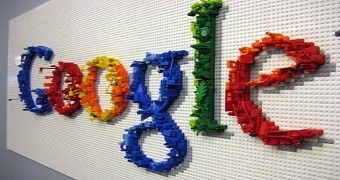Google is quite an ambitious company and most of its outlandish plans come from the Google X Labs, the place that gave us Google Glass, the driverless cars, the delivery drones and the Wi-Fi balloons. The company’s next endeavor is in the giant TV world.
The Wall Street Journal reports that the company is currently developing a display composed of smaller screens that plug together to create a seamless image. This means that the screen could be put together in different sizes and shapes, but still display the image correctly and without the annoying black border we’ve all seen on so many occasions.
While Google hasn’t exactly come out and boasted about its new plans, three people familiar with the project said that the company has put Mary Lou Jepsen in charge of the project. Jepsen is a former MIT professor that helped found the One Laptop Per Child project, which seeks to deliver cheap laptops to millions of children around the world.
After co-founding three startups around display technology, she has been hired by Google to head the display division inside Google X, leading a team that includes engineers from Samsung Electronics, Qualcomm and other major companies.
The bigger the modules, the bigger the problems
Even with the anonymous sources, there aren’t many details about the project. The size of the modules, for instance, is not known, or even why Google is interested in such a project.
There are already a few large TV screens on the market, including some that have a diagonal of 110 inches, but they’re extremely expensive. Furthermore, Google’s plans seem to indicate that it wants to do more than use its screen technology for regular TVs, especially since there’s no need for such a product in people’s homes.
Google’s X Labs are reportedly trying to figure out how to make display modules that seamlessly bind together since even the widest screens nowadays have at least some bezel, not to mention the actual border of the device.
“The big challenge is to electronically, and through software, do the stitching between the seams,” one person told the Wall Street Journal. In order to solve this puzzle, Google is trying to recruit more display experts.
It seems like Google has some competition in Microsoft Corp, who has also been working on large display technology for the past couple of years. Even so, they don’t seem to have come up with much, or at the very least, they haven’t made anything public just yet.

 14 DAY TRIAL //
14 DAY TRIAL //